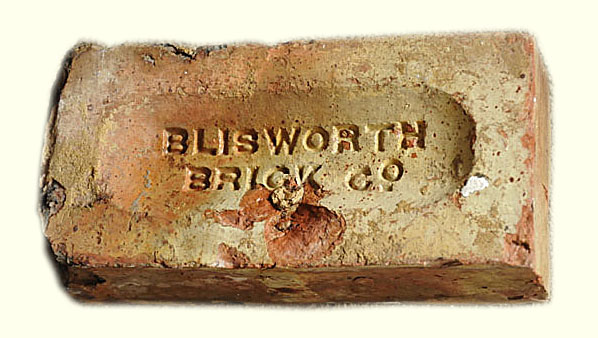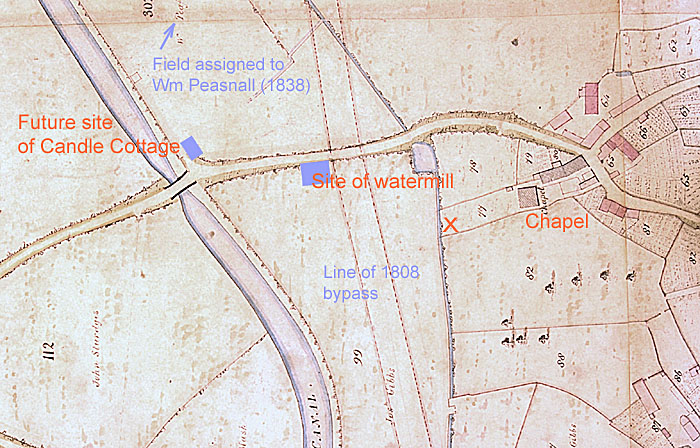|
The Blisworth Brick Company
by Tony Marsh, August 2011 Blisworth Bricks! The late George Freeston had been looking for a sample for many years. People working on old buildings in Blisworth were asked by George if they ever have seen a Blisworth Brick. Whilst George looked* in vain, so did I. One would have expected me to find evidence of Blisworth Bricks because I lived at Candle Cottage for 20 years and dug up numerous broken bricks. I demolished a poorly constructed kitchen to Candle Cottage which was built of bricks of precisely this shape - 9" x 4¼" x 3" and found none with this marking in the shallow frog. On c1900 ordnance survey maps the field there was given the name Brick-Kiln Field. It lies low enough in Blisworth to rest on a deep belt of blue lias clay, perfect material for pottery and bricks. This sample was found in around 2005 by Bob Williams who has lived in the village for 10s of years. He was working on the lower boundary wall of the old graveyard by the Baptist Chapel. That wall was built around 1865 to 1871 and this brick appears to never have been laid but left in the footings as surplus - a red X marks the spot in the map below. The site at the wall (not shown built in 1838) is only 200 yards as the crow flies from where there were brick kilns at the Candle Cottage location. The date is spot on too for the brickmaking activity of the Peasnall family. This family actually lived in the High Street but it is certain they worked the field by the Canal because according to the 1838 Grafton Survey the field later called Brick-Kiln Field was let to William Peasnall.
Other references to Blisworth brick making are the following: the Ludlam family is reported to have kilns in Stoke Bruerne and Blisworth. Maybe the Ludlams, before their bankruptcy, rented this field in around 1800 and perhaps provided bricks for the canal bridges and the tunnel. There is another reference that is documented in more detail and that is of Mr. Savage who operated at Blisworth Arm. He probably began in c1855 and the family continued through to about 1911. Their brickworks, on the present site of Gayton Marina (in Blisworth parish), was taken over by the Asplin family who were supplying bricks to Northampton builders, transporting them down the Northampton Arm. The Savages lived at Arm Farm but the Asplins were from Milton Malsor. The extraction of the clay was moved, by the Asplins at some point, from the marina site to one that was just in Milton parish known locally as "the Kottler-Heron" site. The Brick-Kiln Field was feudal-style common land in 1600, used for clay excavation 1800 - c1880, planted as an apple and damson orchard c1925 after the Grafton Sale of 1919, became accommodation for sheep, goats and a few horses 1978 - 2001 and then acquired a small lake, an earthmoving plant garage plus some facilities, later carefully removed, for cultivating for research purposes THC bearing botanical species since then, for a short period. Some orchard trees remain as do some horses. * - actually, by 1986, George had found a sample but in his NRO records he doesn't say where from. He does not mention the Peasnall connection, nor does he actually identify a brickworks. Instead he points to the Savage/Asplin company, as above, with the full name "Blisworth Brick and Tile Company". He also mentions the "Northamptonshire Brick Company" that was located very near Blisworth Arm but in Gayton parish; the site of the old County "Tip". This site was characterised by a 200 foot chimney until 1914 when it was demolished. I favour the Peasnall source because 'tiles' are not part of the name in the frog. Incidentally some companies pack quite a long title into the frog; "Easton Estate & Mining Company Ltd, Towcester". In other words, George appears to have never known that the field by the canal was called "Brick-kiln Field" and never realised the Peasnall connection that is heavily hinted at in the census and in the 1838 mapping. |

